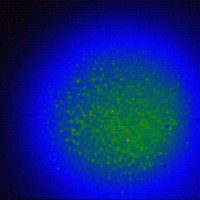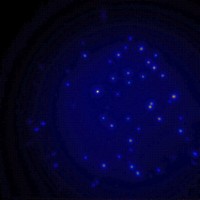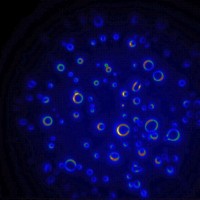Optical characterisation of semiconductor nanostructures for sensing applications
August 4, 2015
by Benjamin Burridge
Part of the EPSRC Vacation Bursaries Scheme 2015
Student name: Ben Burridge
Student degree course: Master of Physics
Year of study: 2
Supervisor: Luca Sapienza
Vacation Bursary Research project title: Optical characterisation of semiconductor nanostructures for sensing applications
Tell us a bit about you and your chosen research field:
I’m heading into my third year at the University of Southampton and I am thoroughly enjoying my time here so far. The optional modules that I picked were of great interest to me, and helped me to choose the research field for this project. These included “Introduction to Photonics” and “Introduction to the Nanoworld”. These modules both had a Quantum basis, and helped engage my interest in Physics at the nanoscale. I chose to invest my time this summer, in the field of Quantum Optics. This involves the optical characterisation of (colloidal) quantum dots deposited on a nanophotonic device. These dots are on the size of ~10nm, and can be used in the field of Quantum Information. They can potentially contribute to a new way of encrypting data using Quantum Mechanics.
Tell us about your specific research project:
Colloidal quantum dots are spherical nanostructures grown in solution. My project starts off by configuring a spin coating setup to evenly coat these emitters onto a silicon surface, with a homogeneous distribution (of either a high or a low density) of quantum dots, depending on the target application. By imaging the light emitted by the colloidal dots when illuminated by visible light on a camera, we can accurately measure the density and homogeneity of the emitters on the sample surface. Spin coating parameters are then adjusted as necessary to achieve the desired density of quantum dots.
Quantum dots emit light whenever the carriers trapped within them are excited and recombine radiatively, and they have the potential to emit streams of single photons, the smallest constituent of light, at very discrete wavelengths. To characterise and prove this, the light emitted by the dots can be directed into a spectrometer and the optical spectrum can be analysed. We plan on spin coating these quantum dots onto photonic-crystal waveguides, and micro-cavities, photonic devices used to trap light in space: the light emitted by the quantum dots will thus be confined at the micrometer scale When we are able to efficiently confine light, our system becomes extremely sensitive to the local environment: a gas or a liquid in contact with the surface will cause a local change in the refractive index, that will be amplified and translated into a shift of the optical resonance at which light is trapped in the device. An optical read-out will thus inform of the presence of specific chemicals in the surrounding of our sensor.
Describe any future plans regarding on-going study/postgraduate research connected to your Vacation Bursary project: I plan to keep a note on the progress of the research group after my time with them has finished. I will also consider continuing in this field of research in my fourth year, for my final year project. The work going on in this group is fascinating and the Vacation Bursary project has helped me to investigate into Physics research. I am happy to say that it is a major contribution to my interest towards later research.
Categories: Blog. Tags: Ben Burridge, Blog, epsrc, idr, interdisciplinary, interdisciplinary research, Luca Sapienza, nanostructures, sensing applications, University of Southampton, USRG, vacation bursaries, and vacation bursary.



